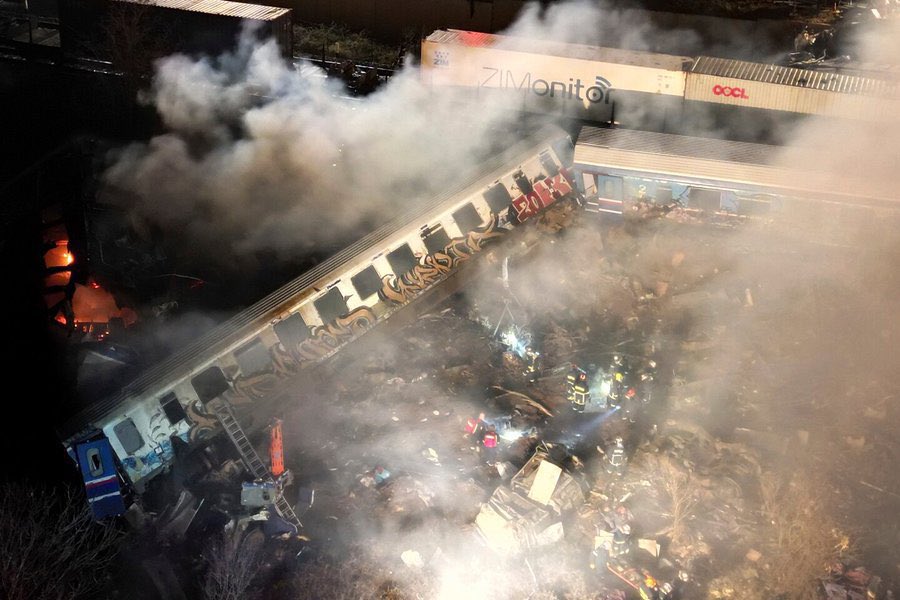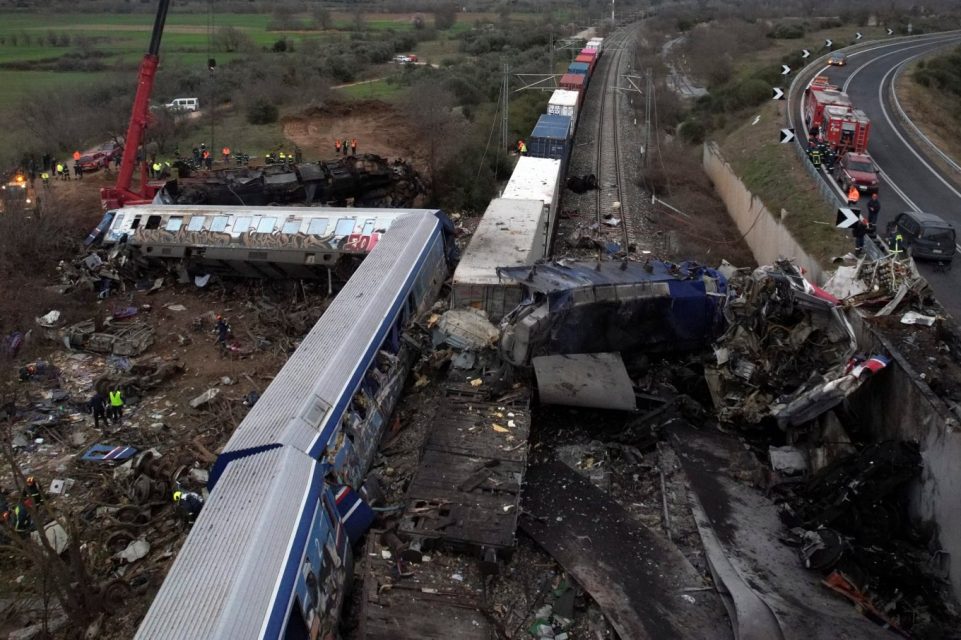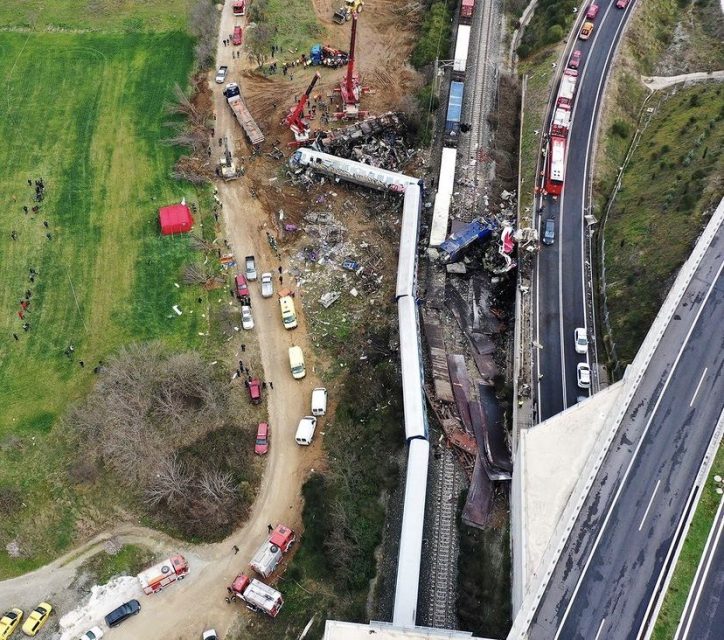A year after the Greek tragedy: Mystery covers freight train’s load

It has been something more than a year since the late night of 28 February 2023, when Greece experienced the deadliest railway accident of its modern history. A tragedy that occurred under unprecedented conditions and a death toll of 57 were more than enough to uncover the chronic weaknesses and neglect of the Greek railway network. 377 days later, the accident’s investigation continues slowly, with little evidence demonstrating the tremendous extent of the tragedy. However, the accident site might be keeping some secrets.
Just a quick reminder: The accident happened shortly before midnight on 28 February near the city of Larissa. The crash involved a passenger train travelling from Athens to Thessaloniki, carrying around 350 people. Just before the Tempi Valley, there was a head-on collision with a freight train. Both trains were reportedly travelling at high speed and on the same track.
Much ink has been written to explain the accident’s conditions. An obsolete railway network relying on manual operations without the required support of digital systems like ERTMS and ETCS. Untrained and understaffed personnel holding the fate and safety of trains literally in their hands. Ignored warnings, first, by worker unions highlighting operational failures and security concerns, and second, the EU, which commenced official inquiries into railway founding in Greece and undelivered contracts concerning signalling infrastructure and more.
All the above were just some of the first findings of the investigation launched after the accident. Their combination produced the perfect conditions for a high possibility of a fatal accident. The empirical investigation of the accident site itself brings forward more than that. Specifically, possible evidence that could explain the accident’s large extent.
From a conspiracy theory…
The first days following the tragic event also saw some conspiracy theories developing around the freight train’s cargo. Of course, two trains colliding head-on at high speed is reason enough for human lives to be endangered or lost. However, the explosion that was produced by the collision, the fire that resulted from it, and the extremely high temperatures that developed, making whole passenger wagons disappear, indicated that there was something more in the story.
As mentioned, conspiracy theories about the transport of ‘nuclear cargo’, or the transport of military equipment to Israel or Ukraine via a third country, started spreading quickly but were busted at the same speed. As these conspiracy theories faded, so did the updates regarding findings from the accident site. As a result, the freight train and its cargo were also excluded from the public and media discourse, forgotten in a way.

…to an actual investigation
That was up until a couple of months ago. For some context, since the accident involves different parties (private railway operator, infrastructure manager, families of the deceased and the state) with a conflict of interest, they have deployed their own investigators who simultaneously inquire into the accident. At the same time, the Greek parliament has also launched an investigation into the matter.
As the accident’s first anniversary approached, investigation findings started surfacing. At the same time, the media began flooding with reports about the freight train’s role. Specifically, investigative reports from the accident site showed a high concentration of three substances that were not supposed to be found there. The substances toluene, benzene, and xylene are used mainly for industrial purposes and are all highly flammable. Their presence at the site could have contributed to the massive explosion and subsequent fire that cost the lives and health of many.
Moreover, the Greek State General Chemistry found that xylene was 95 per cent pure at the accident site, indicating that the substance was somehow stored in high concentrations. Thus, all eyes are turning to the freight train, which seems to be the missing puzzle piece that could bring the story together.

An official document from operator Hellenic Train states that the freight train consisted of 13 wagons, two of which carried empty containers. No chemical substances are mentioned in the document, but cargo appeared to include iron wires, beer, and nutrition materials. The most recent investigative report contradicts this statement. One of the delegated investigators has indicated that the freight train consisted of 14 instead of 13 wagons and that the extra wagon was ‘lost’ amidst the collision’s aftermath.
The story becomes all the more suspicious following complaints by the families of the deceased that the Greek government was too fast to remove the train carcasses and lay concrete over the accident site. The Greek Ministry of Infrastructure has stated that it was prompt in restoring the site to facilitate train traffic. The opposition side claims this might have been done purposefully to obscure critical clues from the investigation.
A many-fold question
It all boils down to the fact that the freight train was excluded very fast from the media and governmental discourse, but there are certainly some unanswered questions still surrounding it. Investigations so far have shown that if there were a role for the freight train to play, then it would be a critical one.
No conclusive evidence shows that the freight train was carrying substances illegally or that the empty wagons were, in fact, full. However, as Greek media reports, if such indications appear even slightly true, then new questions will arise. Why was that transport not declared? Why was there an attempt to obscure facts? Who is involved in this series of events? It is a many-fold question and an unfolding story, nevertheless.
You just read one of our premium articles free of charge
Want full access? Take advantage of our exclusive offer




